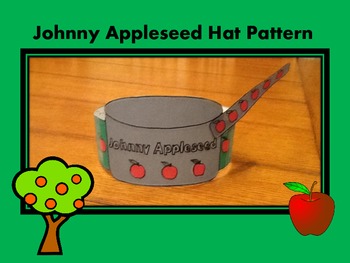

Sometimes, he gave away trees to needy settlers. He often sold his apple seeds to settlers. His trees often grew in land near settlements. As the trees grew, he returned to repair the fence and care for the land.Ĭhapman planted with thoughts about future markets for his crops. The fence helped to keep the young trees safe from animals. Then, he planted his seeds in a straight line and built a fence around them. Then, he cleared the land, carefully removing unwanted plants. First, he would find rich, fertile land in an open area.

Some of the seeds were planted on land owned by a farmer named Isaac Stedden.Ĭhapman was careful about where he planted apple seeds. He planted apple seeds in several areas near a place called Licking Creek. He transported sixteen bushels of apple seeds down the Ohio River in eighteen-oh-one. And they could be made into other products, like apple butter and apple juice.Īfter a few years, Chapman left the hills of western Pennsylvania and traveled west into the Ohio Valley. They could be eaten raw, cooked or dried for eating during the winter. They were easy to grow and store for use throughout the year. Apples offered something different in daily meals. Some people said he loved to watch the flowers on apple trees grow and change into tasty fruit.Īpples were an important food for the early settlers of North America. The reason for John Chapman's life's work is unknown. Pennsylvania was the first stop in what would become a life-long effort to plant apple trees. In a short time, the seeds grew to become trees that produced fruit. He is said to have cleared land and planted apple seeds near a waterway.

Government records show that John lived in the Allegheny Mountains in seventeen ninety-seven. At that time, much of western Pennsylvania was undeveloped. They slowly traveled south and west from Massachusetts to the state of Pennsylvania. When John Chapman was old enough to leave home, he asked his half-brother, Nathaniel, to come with him. This new marriage produced ten more children. John and his older sister moved to Longmeadow with their father and his new wife. In seventeen eighty, Nathaniel Chapman married Lucy Cooley of Longmeadow, Massachusetts. His mother Elizabeth became sick with tuberculosis and died a short time after the birth of her third child. He fought British troops in the battle of Concord in seventeen seventy-five. His father, Nathaniel Chapman, served in America's war for independence. John Chapman was born in Leominster, Massachusetts, in seventeen seventy-four.

However, some of the stories told about Johnny Appleseed over the years may not have been really true. Two centuries later, some of those trees still produce fruit.Īs a result of stories and poems about Chapman's actions, Johnny Appleseed became an American hero. Chapman grew trees and supplied apple seeds to settlers in the middle western Great Lakes area. He planted large numbers of apple trees in what was the American wilderness two hundred years ago. Johnny Appleseed was the name given to John Chapman. Today we tell about a man known as Johnny Appleseed. And I'm Steve Ember with the VOA Special English program PEOPLE IN AMERICA. Johnny Appleseed, 1774-1845: Many Stories and Poems Were Written About This American Heroĭownload MP3 (Right-click or option-click the link.)


 0 kommentar(er)
0 kommentar(er)
